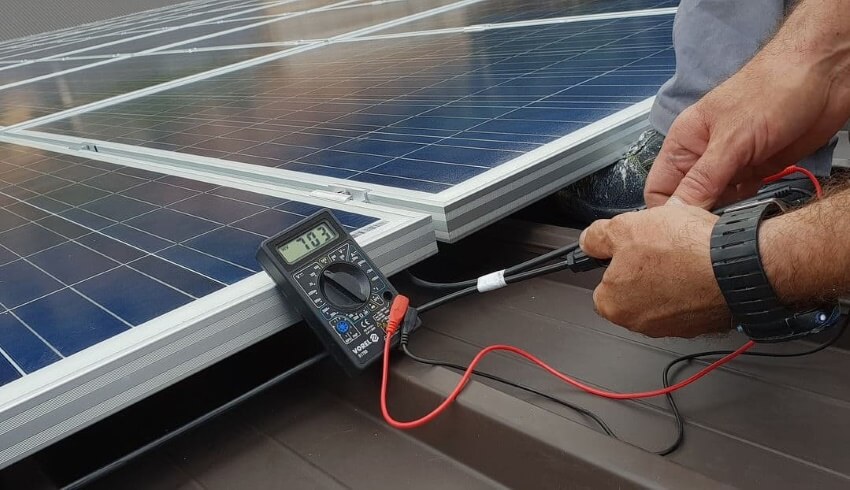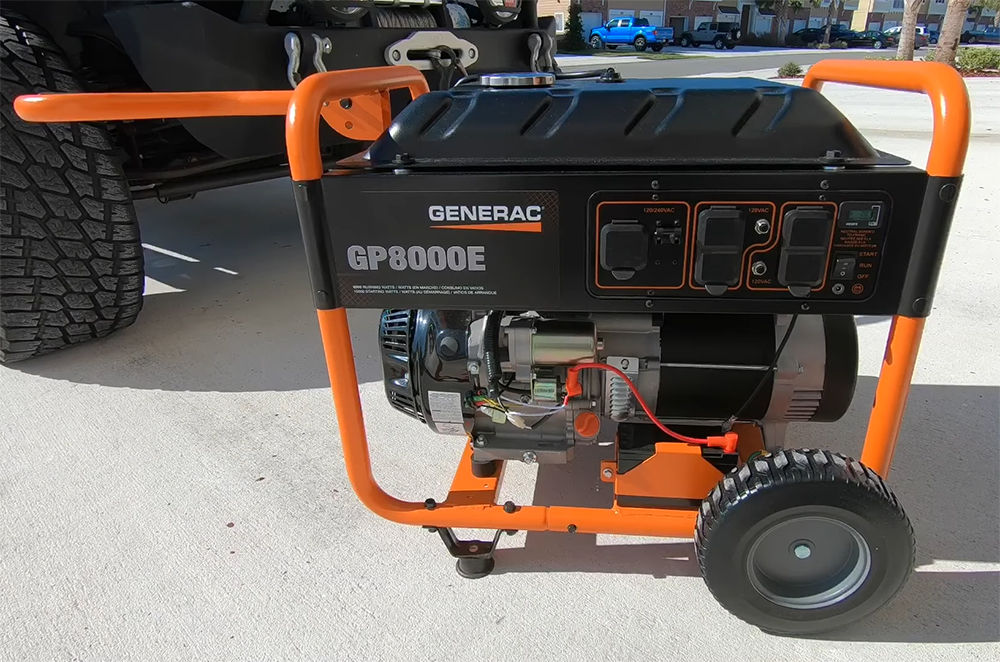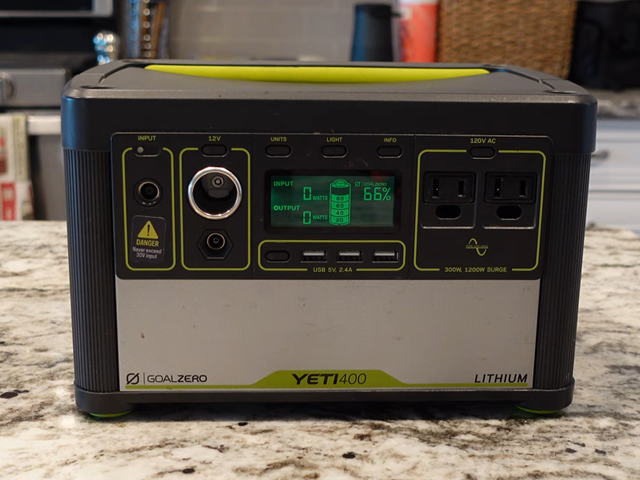
Do you want to become more independent in the face of unreliable electricity supply from the grid? Inverter generators or solar inverters are good, eco-friendly options to consider. However, solar or photovoltaic installations are the most ecologically-friendly. A battery that stores the electricity produced by your photovoltaic solar panels is therefore needed. Now, you’ve bought a 5000-watt inverter but need batteries for it. The first question you need to ask is: how many batteries for 5000 watt inverter? The best solar inverters have around 3,000 to 6,000 watts so this is a good inverter size to focus on.
To power a 5000 watts inverter independently and get the appropriate number of batteries, you need to calculate the battery capacity needed, how long you use the inverter and know the voltage input of the inverter.
However, asides from the size, you have to consider the type of battery to choose and the factors that determine the battery capacity, among others. We tell you everything in this article.
The first step in properly calculating the correct sizing of your photovoltaic installation and the storage capacity of your battery is to make sure that you are producing enough excess electricity to fill it up quickly.
Are you producing enough surplus? If you are, you must now choose the appropriate storage capacity in ampere-hours or watt-hours.
The storage capacity of a battery is expressed in Amperes hours (Ah). The amperage varies from 8Ah to 220Ah depending on the model. When you multiply the battery voltage by these ampere-hours, you get a quantity of energy in Watt-hours (Wh). Finally, keep in mind that the more autonomous you want to be, the higher the capacity of your inverter battery should be.
The formula to calculate the size of battery needed is: Hours needed × watts = total volts/watts = battery amps.
5,000-watt inverters require between 450 to 5000 amp-hour 12-volt battery or two 210 amp-hour 12-volt batteries for 30 to 45 minute operating time. The inverter can run for an hour on a 750 amp 12-volt battery. A 2,500 amp 12-volt battery can run a 5,000-watt inverter for four hours.
The chart below provides a guide to the right battery capacity, depending on the watt output of the inverter:
| Inverter output (Wattage) | Minimum battery size | Optimum battery size |
| 500 | 80AH | 200AH |
| 1000 | 150AH | 400AH |
| 1500 | 240AH | 700AH |
| 2000 | 300AH | 1000AH |
| 3000 | 450AH | 1500AH |
| 4000 | 600AH | 2000AH |
| 5000 | 750AH | 2500AH |
It is important not to choose just any type of battery for a photovoltaic installation. There are several models of batteries capable of storing green energy, each with its advantages and disadvantages.
Here are the different battery models on the market:
The lead-acid batteries consist of several individual cells each having a voltage of 2V. Open lead batteries are robust but require regular maintenance.
Moreover, they are not waterproof, and must therefore be installed in a ventilated place.
Depending on its use (more particularly its discharge), an open lead battery may exceed 10 years. They are ideal for irregular uses, for example on second homes or in RVs
AGM batteries are also lead-acid batteries, but they do not require maintenance. They are waterproof and more secure compared to open lead batteries. Indeed, they do not release heat during charge or discharge cycles.
However, they have a relatively low number of “cycles”, and a lifespan of about 10 years. What does this notion of “cycling” refer to? Quite simply, to the life of the batteries. The greater the number of cycles, the longer the battery life will be.
AGM batteries can be used for everyday use at home.
The gel batteries are an evolution. They are high-end lead-acid batteries. They are resistant and do not require maintenance.
They are very appreciated for their deep discharge and their long cycle life (from 600 to 1600).
These batteries are however sensitive to excessive loads. They are ideal for repetitive cycles, in daily use.
The latest technology is lithium-powered batteries. The market for these batteries is booming. It’s estimated to expand at a growth rate of 11% approximately Trusted Source Lithium-ion Battery Market to Expand at Growth Rate of ~ 11% Compounded Annually from 2019 to 2027 to Reach 15,764.89 Million - Bloomberg Lithium-ion Battery Market to Expand at Growth Rate of ~ 11% Compounded Annually from 2019 to 2027 to Reach 15,764.89 Million Units by 2027: Transparency Market Research. www.bloomberg.com from 2019 to 2027.
No more lead and sulfuric acid batteries that are toxic and non-recyclable! Highly used for their high performance, lithium batteries have a charge-discharge efficiency of over 90%.
To optimize their lifespan, some regulators optimize the battery charge. Also known as the
Battery Management System
Trusted Source
Battery management system - Wikipedia
A battery management system (BMS) is any electronic system that manages a rechargeable battery (cell or battery pack), such as by protecting the battery from operating outside its safe operating area, monitoring its state, calculating secondary data, reporting that data, controlling its environment, authenticating it and / or balancing it.
en.wikipedia.org
(BMS), a regulator is an electronic system that optimizes the control and charging of your battery cells.
When you want to equip your installation with batteries, several elements must be taken into account. First of all, you have to understand the concepts of charge and discharge, voltage and storage capacity.
The overhead and discharge rate of batteries vary from battery to battery and usage.
Overcharging or discharging too deeply can damage the batteries, reducing their lifespan in particular. When choosing the battery size, it is, therefore, essential to think about the maximum depth of discharge. As the capacity of a battery varies between 30% and 80% of discharge, it is mandatory to provide a “margin” when sizing.
A battery that discharges at 80% will have a lower lifespan than one that discharges at 20%.
Technically, 416ah will be sufficient for 5000 watts. However, you can add an extra 50 watts for overhead. So, that makes 460.
One of the first steps to finding the right battery size for your inverter is knowing your load requirement. This will affect the overhead and discharge rate and the lifetime of the battery. To know your total load requirement, simply add the total number of the watt your devices consume. Take note of the surge power of appliances such as air conditioners, dryers, etc. A large system is therefore required for this situation.
Equipping your inverter with a battery can be relatively complex. If you do not want to call in a professional, we advise you to pay particular attention to the storage voltage.
Do you want to invest in a battery that will be powered by solar panels but you do not know which voltage to choose between 12, 24, 48 V? It is essential that you take into account the installed photovoltaic power.
But why? Simply because the higher the electricity consumption, the higher the voltage must be. Here are the voltages that we recommend depending on the power of your installation:
The number of hours you need the inverter for is crucial and should determine your battery sizing. Assuming you have a 5,000-watt 48-volt inverter and need to run it for 6 hours and you have a 0.8 power load factor. Then you should have a battery that produces around 130 to 200-volt amperes.
Battery storage capacities are usually measured by amperes per hour. For home use with large power needs, you need four 200 to 220-ampere hour batteries. This should be enough to run a 5,000-watt inverter for up to 8 hours, depending on the load capacity. You shouldn’t need as much as that for an RV or smaller needs.
Many inverters on the market use a 12 V source of electricity, such as a car battery, while others require 24 V. Therefore, if you have a 12 V battery and the inverter is of the first type, there is no problem. Otherwise, you have to connect two batteries in series.
To connect the inverter to the battery or batteries, simply connect the red input “battery side” of the inverter to the positive pole of the battery. Then connect the black input to the negative pole of the battery, or of the second battery if you use two batteries in series.
At this point, if the batteries are charged, a load operating at 230 V alternating voltage can be connected to the inverter (eg. a radio, a fan, etc.) and turn on the inverter. However, if the batteries are part of a photovoltaic system, then, the connection diagram is more complex. It is necessary to go through a charge controller connected to both the photovoltaic panels and the batteries and the inverter.
There are situations where the parallel connection system is better. A parallel-connected series of batteries provides great internal resistance. Refer to the user guide of the battery for the best usage.
Buying batteries for your 5,000-watt inverter is a crucial step to take as it determines the hours of backup you can get during a blackout and at nighttime especially when the sun is down. Hence, choosing the right battery type and size is essential. To know how many batteries for 5000 watt inverter, the battery storage capacity, your load requirement, time of use, the overhead and discharge rate, among others, are good criteria to consider. We’ve made analyses and provided charts on the possible battery capacity for a 5000-watt inverter. In any case, a 750AH to 2500AH battery system is recommended. But don’t forget to consider the criteria we listed.





